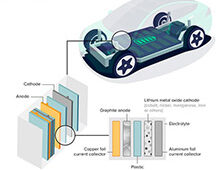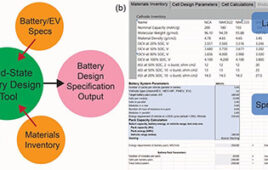
Researchers from the University of California San Diego have developed a new flexible, stretchable battery that could power wearable sensors, solar cells and other kinds of electronics.
The printed zinc batteries can stretch twice their size in any direction by incorporating a hyper-elastic polymer material called SIS made from isoprene—an ingredient in rubber—and polystyrene—a resin-like component—which allows the batteries to stretch up to twice their size in any direction without being damaged.
“This is a significant step toward self-powered stretchable electronics,” Joseph Wang, one of the paper’s senior authors and a nanoengineering professor at the Jacobs School of Engineering at UC San Diego, where he directs the school’s Center for Wearable Sensors, said in a statement.
“We expect this technology to pave the way to enhance other forms of energy storage and printable, stretchable electronics, not just for zinc-based batteries but also for Lithium-ion batteries, as well as supercapacitors and photovoltaic cells.”
The batteries were printed with an ink made of zinc silver oxide mixed with SIS. The researchers also added bismuth oxide to the batteries to make them rechargeable.
When the bismuth oxide is mixed into the batteries’ zinc electrodes it prolongs the life of devices and allows them to be recharged.
The researchers used standard screen printing techniques to produce batteries that can be printed cheaply and directly on fabric or on materials that allow wearables to adhere to the skin.
When zinc batteries discharge, their electrodes react with the liquid electrolyte inside the battery and produce zinc salts that dissolve into a solution and eventually short circuit the battery.
However, by adding bismuth oxide, the electrode does not lose zinc to the electrolyte, ensuring that the batteries continue to work and can be recharged.
“Understanding the scientific mechanism to do this will allow us to turn non-rechargeable batteries into rechargeable batteries–not just zinc batteries but also for other electro-chemistries, such as Lithium-oxygen,” Y. Shirley Meng, a UC San Diego professor, said in a statement.
The batteries only currently have about one-fifth of the capacity of a rechargeable hearing aid battery but it is one-tenth as thick and is cheaper, than more commercially available materials. The researchers plan on continuing to improve the battery’s performance.




